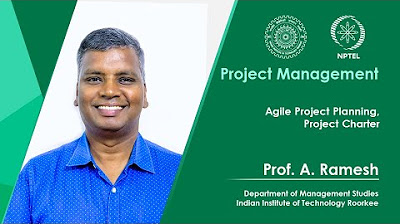Waterfall vs. Agile in 60 seconds
Summary
TLDRThis video compares two key product management methodologies: the traditional Waterfall model and the Agile approach. The Waterfall model follows a linear, sequential process, focusing on gathering all requirements upfront before moving through distinct phases of development. In contrast, Agile emphasizes flexibility and incremental delivery, with feedback loops from customers after each sprint. This hybrid approach combines careful upfront planning with adaptability, ensuring that products meet user needs and fostering continuous improvement throughout the development cycle.
Takeaways
- 😀 The script discusses the concept of product management approaches, specifically contrasting linear, sequential methods with more incremental and agile methodologies.
- 😀 Linear product management involves gathering all requirements upfront, designing a solution, and then developing, testing, and deploying in distinct phases.
- 😀 In a linear approach, each phase (development, testing, deployment) must be completed before moving to the next, focusing on providing solutions as a whole.
- 😀 Empathy for stakeholders and customers is emphasized in the design phase, where feedback is collected to ensure the solution meets needs.
- 😀 The goal of a linear approach is to achieve a successful project delivery by following a structured, sequential process.
- 😀 In contrast, agile methodologies focus on incremental delivery, allowing for faster feedback loops and continuous improvement over time.
- 😀 Agile approaches prioritize customer satisfaction, delivering small increments and adapting the solution as it progresses.
- 😀 Each iteration in agile allows for customer feedback, ensuring the final product is more aligned with user needs and expectations.
- 😀 The script also mentions the importance of using customer feedback after each sprint to refine the product until it's complete.
- 😀 Ultimately, the focus in both approaches is on achieving a solution that best serves the customer’s needs, whether through a structured or iterative process.
Q & A
What is the main focus of the video?
-The video focuses on comparing two project management approaches: the traditional waterfall method and the more modern agile approach. It emphasizes the importance of customer feedback and satisfaction in both methods.
What are the key characteristics of the waterfall method?
-The waterfall method is linear and sequential. It involves gathering all requirements upfront, followed by a design phase, then development, testing, and deployment. Each phase must be completed before moving on to the next.
What does the agile approach prioritize?
-The agile approach prioritizes flexibility, iterative progress, and customer satisfaction. It delivers solutions in short cycles (sprints), gathering feedback after each cycle to refine the solution.
How does the waterfall method handle stakeholder feedback?
-In the waterfall method, stakeholder feedback is typically gathered early in the process during the requirements phase. After that, changes are less frequent, and feedback is not incorporated until the later phases.
How does the agile approach handle customer feedback?
-In agile, customer feedback is integrated after each sprint. This iterative process allows teams to make adjustments based on the feedback before moving on to the next sprint or iteration.
What are the benefits of the agile approach over the waterfall method?
-Agile allows for quicker response to changing requirements, more frequent customer feedback, and continuous improvement. This leads to higher customer satisfaction and more flexible project delivery.
What is the role of team leaders in the waterfall model?
-In the waterfall model, team leaders are responsible for gathering all requirements upfront and managing the design, development, and deployment phases. The process is more rigid, with less room for feedback during the execution stages.
What is the significance of sprints in the agile methodology?
-Sprints in agile are short, time-boxed cycles where a team delivers a portion of the solution and gathers feedback. After each sprint, teams refine the product based on customer input before moving to the next sprint.
What does the term 'customer satisfaction' imply in the context of these project management approaches?
-Customer satisfaction refers to how well the final product meets the customer's needs and expectations. In agile, it is prioritized by integrating frequent feedback from customers throughout the development process, while in waterfall, it is often addressed later in the project.
Why might some projects be better suited to the waterfall method rather than agile?
-Waterfall may be more suitable for projects with fixed requirements and little change expected throughout the process. It works well in environments where detailed planning and structure are necessary, and customer feedback is less critical during the development process.
Outlines

This section is available to paid users only. Please upgrade to access this part.
Upgrade NowMindmap

This section is available to paid users only. Please upgrade to access this part.
Upgrade NowKeywords

This section is available to paid users only. Please upgrade to access this part.
Upgrade NowHighlights

This section is available to paid users only. Please upgrade to access this part.
Upgrade NowTranscripts

This section is available to paid users only. Please upgrade to access this part.
Upgrade NowBrowse More Related Video

27. OCR A Level (H046-H446) SLR6 - 1.2 Development methodologies part 1

What is Product Management? Definition and Examples

Project Management: Waterfall, Agile, & Hybrid Approaches

Agile vs Waterfall: The 3 Most Impactful Differences

Lecture 07: Life Cycle Model (Contd.)

Lecture 14 : Agile Project Planning, Project Charter
5.0 / 5 (0 votes)